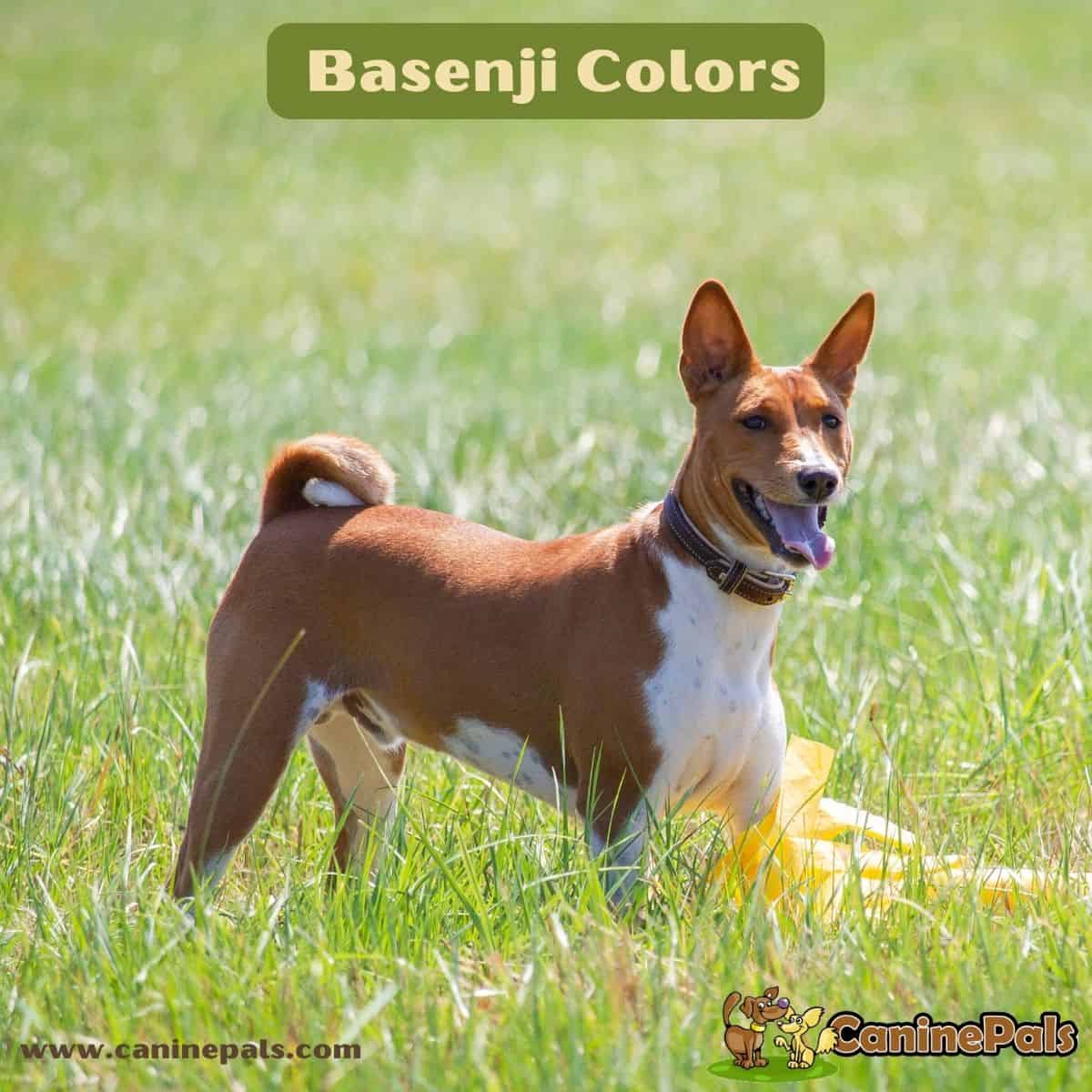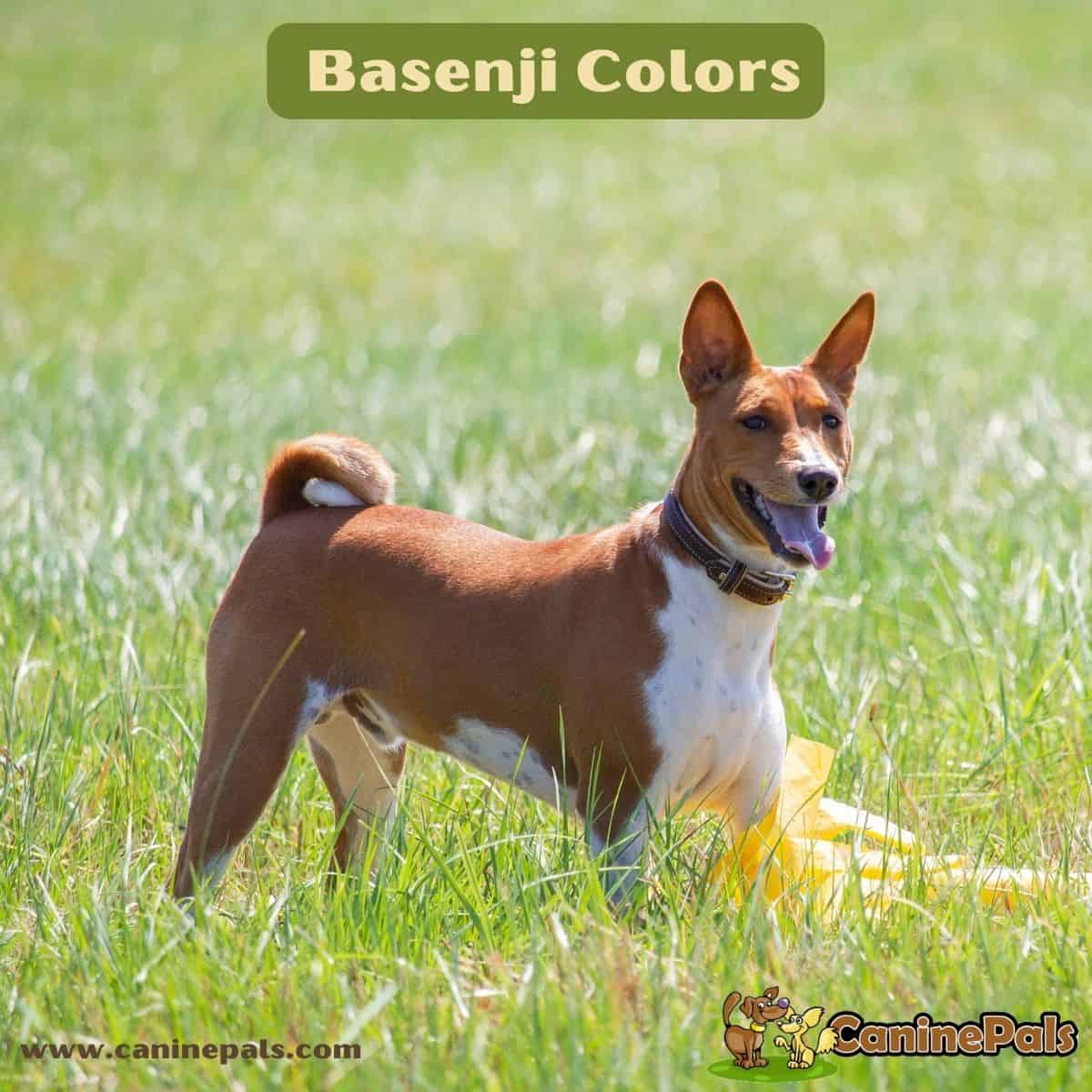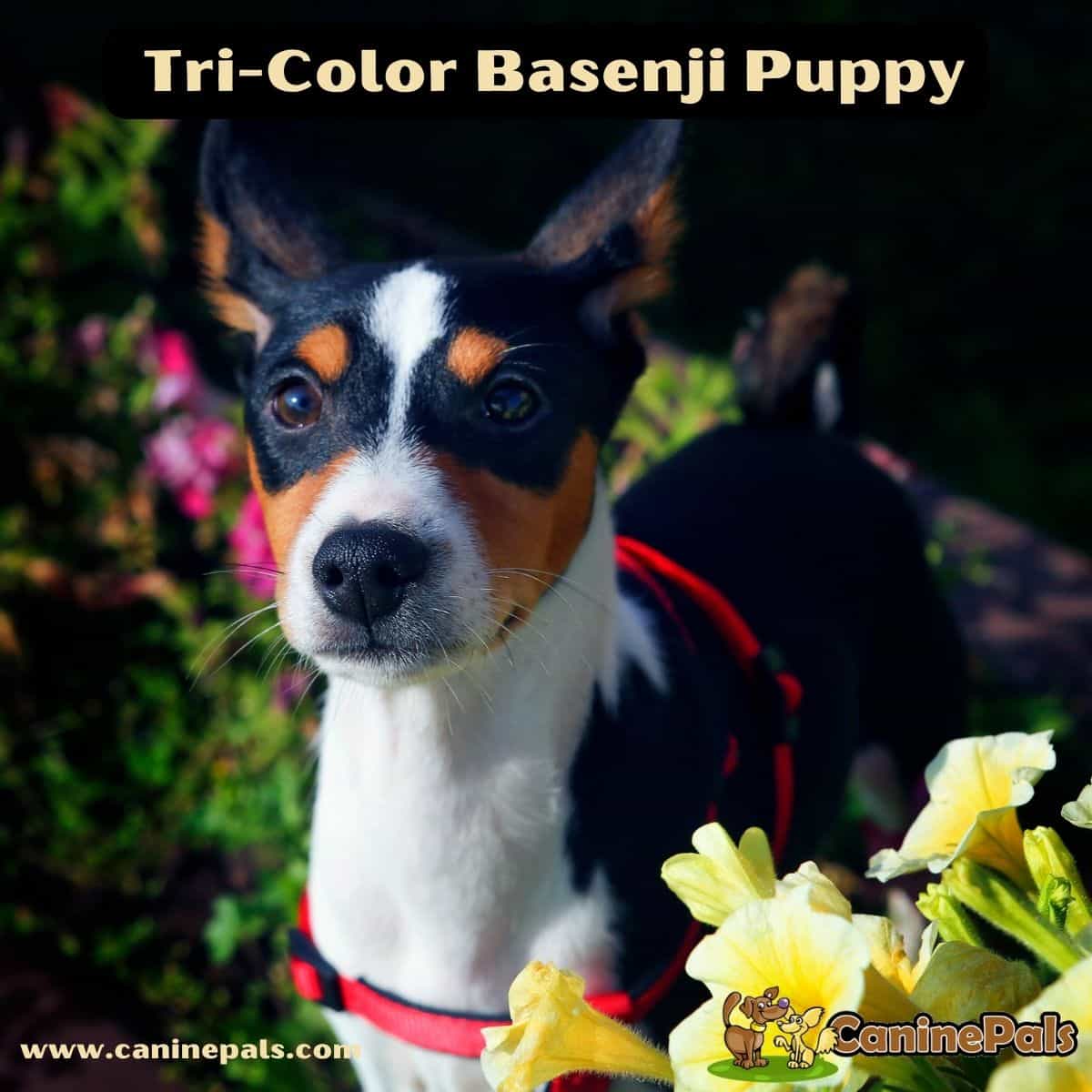Understanding the costs involved is a crucial part of your puppy search when considering the addition of a Basenji puppy to your family. Known as the “African Barkless Dog,” Basenjis are ancient, intelligent, and high-energy dogs that require a knowledgeable guardian. The cost of a Basenji puppy can vary significantly based on various factors, including the breeder’s reputation and the specific health concerns of the breed.
In this article, we’ll talk about what factors affect the Basenji price. Of course, ultimately, it’s up to your budget! But this will help you understand how much each type might cost.
Basenji Information
With their medium size and high intelligence, Basenjis are best suited for pet parents who are ready to invest time in physical exercise and regular veterinary check-ups. This ensures a well-tempered companion who can integrate well into families with young children or other pets.
The Basenji has a fascinating history and is an intelligent, energetic dog whose bark sounds like a yodel. They possess the qualities of both dogs and cats, making them ideal companions for those with allergies or who live in apartments.
The Basenji dog breed originated in African countries, where it was bred to hunt small game. Today, Basenjis are not used for hunting but excel at agility competitions, obedience trials, rally obedience, herding livestock, and tracking scent trails. In addition, a recent study found that these dogs had the fewest reported health problems among all other breeds.
Are you looking for a new Basenji puppy? Then look no further than this unique canine breed.
These purebred dogs are all-in-one. However, the Basenji dogs’ cost is pocket-friendly despite their amazing characteristics.
How Much Does a Basenji Cost?
The average Basenji puppy costs between $1200 and $5,000+. Factors that can influence pricing include gender, size, color variations, and the breeders’ location.
One vital thing to remember when purchasing any pet Basenji puppy is to research breeds before deciding on one because prices vary widely depending on many factors, including history and temperament.

Basenji Dog
Basenji Personality Type
Have you ever come across a dog that doesn’t bark? HAHA NO? This breed was primarily bred in Africa for hunting due to its vigilant, silent behavior.
These are none other than Basenji, aka Congo Dogs. They are small, charming, witty, and extremely intelligent. They are best known for their elegance.
However, their independent nature makes them not easygoing, which also makes training challenging. Does this make them NEVER-TO-ADOPT dogs? Of course not!
Like every other dog breed, this breed is also a perfect combination of positive plus negative traits.
Their beauty, dignity, and tempting traits wipe out their negativity. Their cute fur, with a sparkling soft coat, tautly coiled tail, crinkled brow, and poetic almond-shaped eyes, symbolize low-key emotions.
They come in various captivating colors, such as black, black and white, brindle, tri-color, tan, and red. Each color never fails to steal the thunder.
The strong and subtle Basenjis are a hunting breed. They have small, graceful, fluffy coats with striking colors and walk elegantly yet actively. Despite their dignity, Basenjis are keen observers and heedful, making them perfect watchdogs.
Here’s every minor detail you need to know about their personality:
1. Bundle of Love
They love to be the center of attention and to be loved and cuddled. They are very affectionate and can prove to be perfect family pets. These dogs appreciate the presence of their favorite people.
This breed is a bundle of love who will sit on your lap and make you feel special.
P.S. If you love them back like they do, they’ll make you the apple of their eye.
2. Full of Energy
This breed is a pack of energy. They are active and sporty, need a lot of activities and exercise, and are always ready for something extraordinary.
Their lively nature will keep you well-engaged and energized around the clock.
3. Can’t Stand with Stupidity
A hitch with smart dogs is that they cannot withstand nonsense or stupidity; Basenji puppies are one example. They are smart, grab stuff quickly, and adapt to all situations.
However, they can sometimes be stubborn, especially when triggered by unnecessary loud noise and chaotic situations.
4. Burning with Curiosity
Basenjis are as curious as cats or fish. They have an optimistic approach to situations and are always eager to learn new things, catch information, and explore their surroundings without qualms. They don’t stick to their routine but look for daily adventures.
Note: Keep an eye on his activities. Out of curiosity, he might hurt himself or anyone else.
5. Always on His Toes
Basenji puppies are not couch potatoes; they are keen and vigilant, observing things without making noise. These silent witnessers burst forth their ears and stiffen their foreheads when they spot an extraordinary situation. They are regarded as the best watchdogs.
6. Pal Up!
This dog breed is the best companion you will ever come across. It is child-friendly and pet-friendly. His loving, caring, playful, and energetic nature never bores people. He pals up easily and quickly but needs little training before socializing with new people.
P.S. Ensure situations don’t turn him off or get ready to handle the aggression.
Basenji Size
Basenji’s size is the major factor affecting many people’s buying decisions. They are famous for small or small to medium-sized dog breeds.
Their maximum height ranges between 15 to 17 inches, and weighs between 20 to 26 lbs. If you are looking for a larger dog, these itty bitty puppies are not for you.
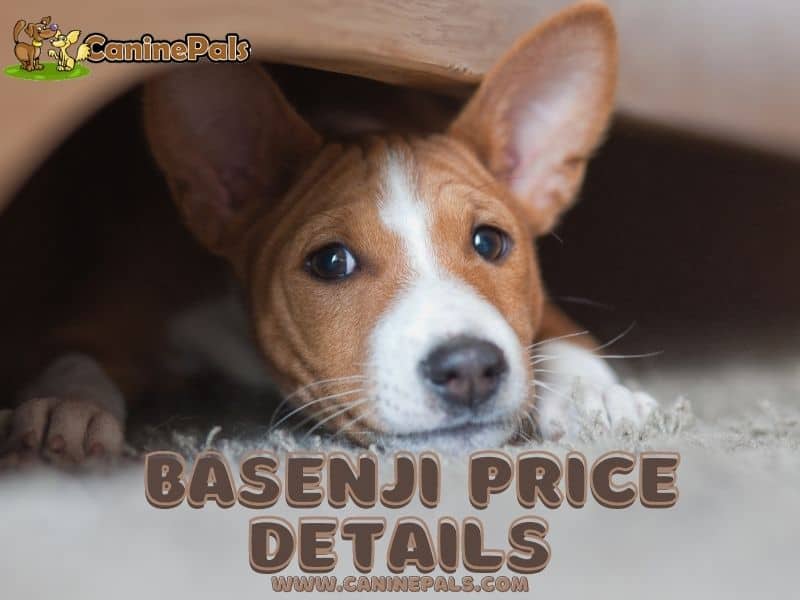
Basenji Puppy
More About Basenji Price
Everyone is willing to pay a hefty amount to own a purebred, smart, and rare dog. And why not pay when you’re getting everything in one dog breed? However, when it comes to the Basenji, this breed is not unique and has all the amazing traits, but it is also a low-priced puppy.
The average Basenji cost ranges from $1,200 to $3,800. However, a well-bred Basenji puppy typically costs $6000 or more from conscientious breeders. The cost may differ due to certain factors, such as the breeder you’re buying from, the health of the puppy, or more.
It is important to go for a reputable and reliable Basenji breeder as it counts on the quality and health of the Basenji puppy.
When considering Basenjis, it is imperative to choose a reputable breeder over a pet shop or casual breeder. Reputable breeders, often affiliated with organizations like the American Kennel Club and the Basenji Club of America, are likelier to engage in responsible breeding practices, including health testing and DNA tests to maintain a healthy gene pool.
These practices help ensure your new pet is as healthy as possible, though they might increase prices. The average cost of a Basenji puppy can also reflect the level of care and investment in obedience training and socialization the breeder has provided, especially for this sensitive and clever dog breed known for their erect ears and unique traits.
Furthermore, a good breeder will encourage a personal visit, allowing you to see the environment in which the puppies are raised and to meet your potential new family member. This visit can also be an opportunity to see evidence of the health tests performed and ask any questions about dog ownership today, from exercise needs to the average annual veterinary costs.
Hint: You can adopt a puppy from a shelter or the rescue organization and save a few bucks. Adopting a Basenji puppy can save you around $1,000 or more, as many shelters or rescue organizations charge adoption fees of $250 to $800.
The amount is invested in the dogs to provide rehabilitation and veterinary care before they are handed over to the adopter. This builds their adaptability to accept new families, pets, and environments.

Basenji Dogs
Factors Affecting The Basenji Cost
Multiple factors contribute to the fluctuation of Basenji dog breed prices. Put a glance:
● A Rare Breed
Basenji puppies are not born around the year like other dog breeds. They are born between the late autumn and early winter, i.e., October to December. However, female Basenjis come between July (late summer) and September (early autumn).
Since they cannot produce many babies yearly, they are honored as a rare and unparalleled breed.
In most cases, many responsible breeders keep the potential buyers on a waiting list until the slew of puppies produces the next generation. Resultantly, the number of puppies demanded exceeds the number produced yearly, leading to rising prices.
● Breeder, You’re Buying From
A reputed and well-recognized breeder with years of experience gaining knowledge about different dog breeds will charge extra for a puppy. Still, along with the puppy, he’ll offer every knowledge he has learned.
He will guide you regarding mental and physical health concerns and some avoidable and unavoidable situations. On the contrary, some breeders offer a puppy for a bargained amount but do not meet the quality standards.
If you’re a first-time owner of Basenjis, you should go for an experienced breeder. He can make your starting journey fun-filled.
IMPORTANT: Basenji breeders are finite in number due to the breed’s uniqueness. These small breeders sell the dogs at the asking price, which is usually high.
● Basenji’s Documentation
Dog identification and registration are mandatory processes that require certain documents as evidence of the dog’s breed. Basenji breeders who know the worth of these documents and provide them when selling will surely charge you extra.
● Health Diagnosis
It is observed that Basenjis undergo some health diseases that can be unavoidable sometimes. These diseases include Fanconi syndrome, anemia, hernia, retinal atrophy, pupillary membrane, and autoimmune thyroiditis.
To ensure the puppy’s good health before selling it, some breeders get the dogs vaccinated and checked up by a reliable veterinarian. This costs the breeder some medical expenses, which he usually charges from the to-be owner.
This extra cost is your pre-investment in the dog, saving you from future medical expenses.

Basenji Dog
Initial Cost of Owning a Basenji
The initial cost of Basenjis will spur you to grab these little furries with all your pleasure. The initial prices are surprisingly low once you’ve tied the knot with a Basenji puppy.
Check out these upfront ownership costs;
● Accommodation
Providing your puppy with the necessary supplies in a neat, clean place can make him feel special. This gives him an aura that a righteous soul surrounds him.
Getting him a dog bed or a crate is a decent option to make him feel kind. The beginning of the dog bed and crate are $11 and $14, respectively.
Similarly, a food and water bowl adds value to his living style. The food bowl costs $2, while the water bowl costs $5.
Tip: Get a ceramic or stainless steel bowl that prevents food contamination and bacteria.
● Schooling
Basenji is full of spirit, has an independent personality, and has a strong temperament. They are dominant as a boss and mischievous as a monkey, which makes the training challenging. Professional training is needed to overcome his potential aggression, stubbornness, and skepticism.
If you opt for normal group training, it will cost you around $350. However, if you choose one-on-one training and hire a personal trainer, the 1.5-hour session will cost $200.
P.S. Puppy Kindergarten is a wonderful option if you’re going for group training.
● Licensing/Documentation
Puppies have a right to get registered, licensed, and have identification. And the puppy owner is responsible for this. This only cost $5. However, a fur owner will be penalized if his dog is found unregistered.
● Microchip
Basenjis are mischievous. They are escape masters and can run away in the blink of an eye. Microchips help find them if they are lost somewhere—this costs around $10.
Cost of Supplies
Supplies welcome the puppies at home. They help to create an unbreakable bond between the puppy and its owner. We have done in-depth research on Basenjis’ cost-effective supplies. The chart will help you to make a reasonable decision;
Supplies Cost High-quality food $35 Food and water bowl $2 - $15 Bed $21 Crate $24 (vary with size) Collars or Harness $10 - $40 Leash $10 - $30 Toys $25 Pooper Scooper $10 - $30 Plastic poop bags $5 - $10 Stain & odor removal spray $5 - $20 First aid kit $15 - $50 Brush $5 - $45 Shampoo $5 - $20 Tooth-brushing kit $5 - $15 Toenail clippers $5 - $30
The total cost of supplies is even more effective than the Basenji price. It ensures the pup owns your home sweet home.
Basenji’s Monthly Expenses
Supplies costs are a one-time investment that only recur when broken or damaged. However, some expenses are for the monthly maintenance of the Basenji.
Below is Basenji’s average monthly expenditure chart, which helps you decide your budget.
Items | Items Average Monthly Expense |
Food | $120 |
Insurance | $10 |
Treats | $20 |
Emergency Funds | $30 |
Basenji’s Medical Treatment Cost
Basenji were undoubtedly originally bred for hunting but are prone to health issues. Some of these medical conditions are inherited and may be serious at times.
Below is the list of potential diseases and their average treatment cost:
Disease Average Cost of Treatment Hip Dysplasia $4,000 - $6,000 Elbow Dysplasia $3,000 - $5,000 Heart Disease $5,000 - $20,000 Spine Problem $5,000 - $9,000 Torn Ligaments $3,000 - $6,000 Patellar Luxation $1,500 - $3,000 Fanconi Syndrome $9,000 - $11,000 Hernia $750 - $2,500 Anemia $500 - $2,000 Hyperthyroidism $10 - $30 per month Hypothyroidism $10 - $30 per month Eye Problems $50 - $3,000 Broken Bones $2000 - $5,000 Foreign Body Ingestion $500 - $5,000 IPSID Varied Price
Visiting a renowned vet annually is recommended for timely checkups and health diagnoses to avoid potential problems.

Basenji Dog
Surprising Facts About Basenji
You plan to adopt these cute, itty-bitty pooches with unique lifestyles and appearances. But before you proceed, check out these surprising facts that will help you better understand Basenjis and keep you smiling throughout the journey.
- Basenjis are distinguished as ‘barkless’ puppies, but their voices can sometimes be extremely ear-splitting. They whine, scream, and yodel.
- They are independent, yet they can’t live alone. They love being surrounded by their owner. They adore socializing with other pets and human children.
- Exercise and many activities are the best solutions to keep these ‘escape masters’ engaged.
- Basenjis are a clean, low-maintenance breed. Also, they don’t shed much, which butters up the owner.
- These small furry friends are sensitive. They cannot withstand punishments or enrage.
The Basenji is a hunting dog from Africa originally used as a present for Egyptian Pharaohs. It was brought to England in 1937 and to America in 1941. He’s often nicknamed the “barkless dog” because he only makes a yodeling sound when excited. He can be black, red, or brindle but always has a white chest, feet, and tail lip. He has wrinkles on his head and a high curly tail.
The Basenji is playful, agile, and moves easily because he’s muscular. The Basenji temperament is independent and often aloof. He works out of sight of the hunters and is guarded when meeting strangers. He only needs minimal grooming because his short coat doesn’t have a normal “doggy” smell. He weighs 22-24 pounds and is 16-17 inches high.
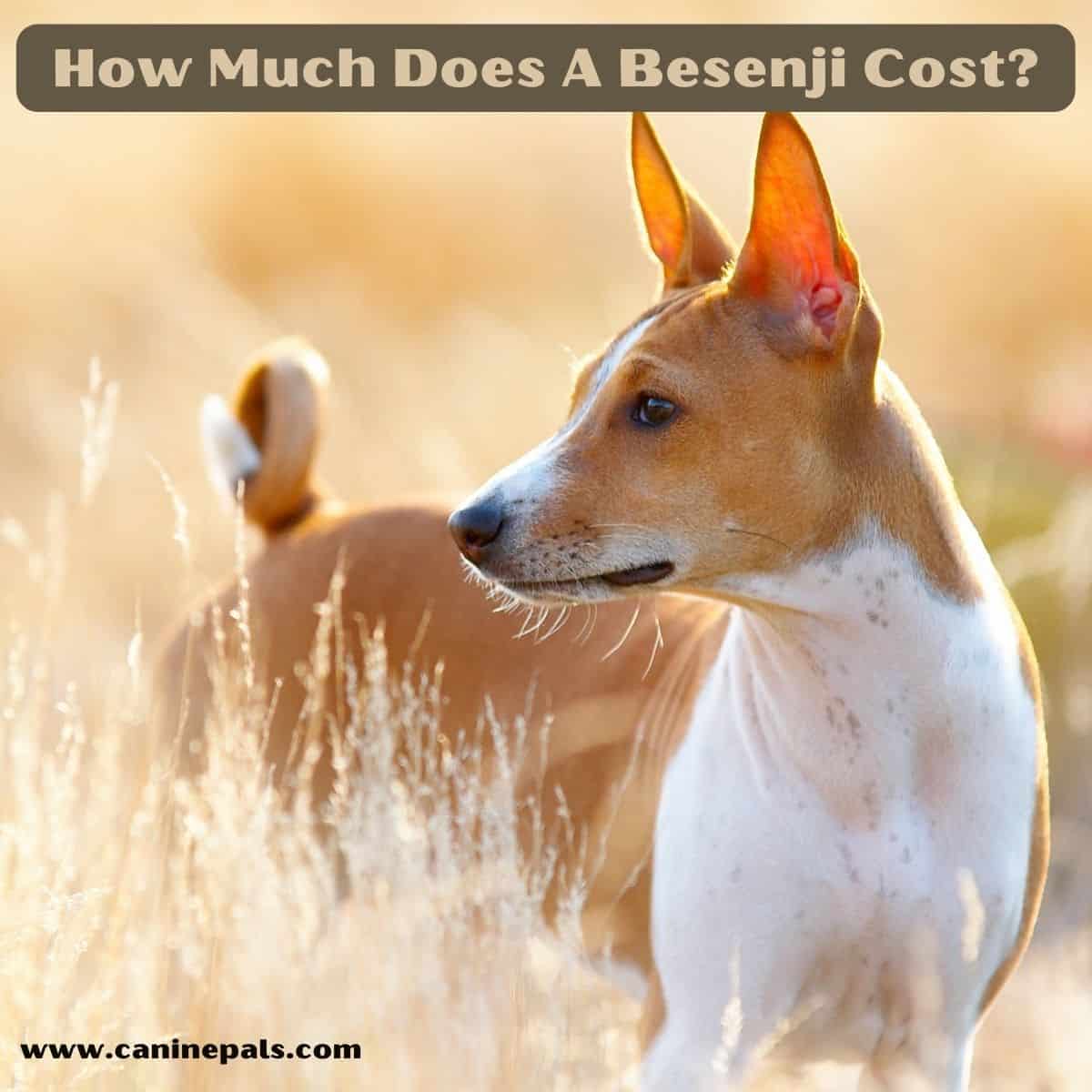
Basenji Dog
Final Words
In conclusion, understanding how much Basenji puppies cost involves considering various factors contributing to their price. Purchasing a Basenji from a reputable breeder, a knowledgeable guardian of the breed who conducts thorough health testing, including DNA tests, often carries a higher price tag but ensures that you receive a healthy, well-tempered puppy. The American Kennel Club and the Basenji Club of America can provide accurate information and connect you with a community of Basenji breeders committed to the highest standards.
The cost of a Basenji puppy reflects its breed’s unique traits and high intelligence and is an investment in a truly exceptional companion. These ancient, medium-sized dogs, sometimes called African barkless dogs, are known for their high energy levels and need for regular physical exercise, making them a fantastic choice for active pet parents.
While the initial price of a Basenji may be steep, investing in proper care, obedience training, and regular veterinary check-ups can ensure a fulfilling life for your new pet. This investment can also reduce costs in the long run, as a well-cared-for Basenji is less likely to develop health issues.
When embarking on your puppy search, it’s crucial to consider not just the average cost but also the breeder’s practices, the evidence of health tests, and whether the specific Basenji’s traits make them the right breed for your lifestyle, especially if you have young children or other pets.
Spending time with a particular breeder or visiting the puppies can also help you find the best possible match—an intelligent, sensitive, and active dog ready to become a cherished part of your family. Considering these factors makes you feel more informed and prepared to own a Basenji puppy.
Copyright CaninePals.com. All Rights Reserved.
References and Further Reading:
[1] American Kennel Club, Basenji Information.


